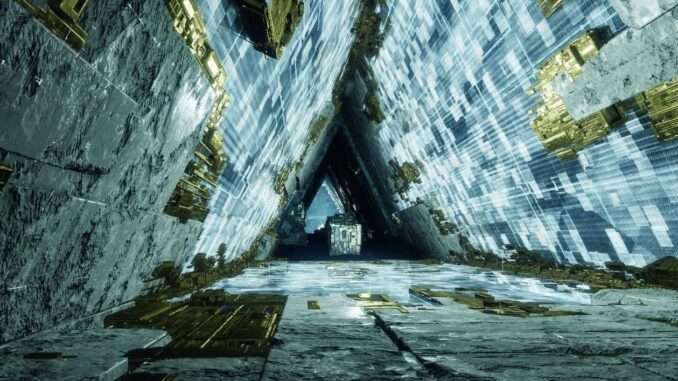
A guide on how to read a map, why it’s important, and other tips to winning in Control, Iron Banner, and other “capture the zone” style PvP modes. Aimed at players new to Destiny 2 PvP.
Guide Contents
Introduction and Basics for Control (Quickplay)
Note: Credit goes to Goomba The Vexed
Eyes up Guardian… the goal of this guide is to teach players new to PvP the principals of PvP ‘map control’: how we do it and why it’s important for winning. It will primarily focus on two PvP modes, Control and Iron Banner, but can be extended to other modes with similar “capture the zone” concepts, such as Momentum Control. Please note that while this will teach you the concepts and give examples… a lot of this comes from practicing and learning where the spawn points are and what causes changes in the location of where players spawn.
So what is ‘map control’? Map controlling is a process of understanding where players will spawn, controlling where players will spawn, and how to ultimately use this information to give your team an advantage. In game modes such as Control and Iron Banner, you capture zones to add to your score when you make a kill. There is an additional perk for capturing all zones in Iron Banner, but this will be explained later in the guide. In short, the more zones you capture, the more points each kill is worth and the faster you will reach the score cap or mercy the enemy team.
Per kill, the scoring is like this:
- A kill = 1 point (there is no reward points for having a single zone)
- A kill with an zone advantage (2 zones) = 2 points (1 for the kill and 1 for the advantage reward)
- A kill with Power Play (all 3 zones captured) = 3 points (1 for the kill and 2 for the power play)
You also claim a point for your team by simply claiming a zone. To win in Control, your team needs to be the first to 150 points.
This is why it’s super important to understand map control. Having a single zone can be more important then having none. Unfortunately the enemy team, even if they get the same number of kills, will score twice the number of points if they have the other two zones. Map control will help you not only figure out what zones to focus on capturing, but also give you a good idea where the enemy team will be coming from after you capture those zones.
Map Control Basics: Zone Defense in Legion’s Gulch
To understand how to use map control to your advantage lets start with a map where your skill in map control is going to either win or lose the match: Legion’s Gulch.

In this map, zone B is isolated with only 3 ways to get to zones A and C (of which only one provides any cover). The initial spawn locations are at zones A and C. There is a third spawn location behind B. Zones A and C are much easier to defend because of the large amount of cover and the catapults to and from zone B make for easy pickings as players fly through the air unable to protect themselves. Zone B is split into two parts: the inner spawn location and the outer zone section. the inner spawn location, while completely indoors, has doors on 3 sides… which allows enemies to ‘surprise’ people inside. the outer zone area lacks any real cover other then the inner spawn location and it’s doors or fleeing out one of the catapults toward zone A or C. Zone B’s area also has high walls around it… making it difficult for players at zone B’s area to see, much less take advantage of, the defenseless of enemy players who are using the catapults to get to zone B. In addition, once a team gets spawned behind B, they tend to become stuck spawning there for a while and sometimes the rest of the match (often resulting in a loss). You will want to prioritize capturing A and C zones while avoiding capturing zone B. Why do we avoid the ‘forbidden zone B’? When you capture zones A and C, there is a good chance the enemy team will be forced to spawn behind B. If a member of your team claims B during this time, the enemy team will start spawning at A or C. Meaning your team could quite possible lose one or both those highly defendable and advantageous zones, leaving you with harder to defend zone B as your only zone.
Ultimately the zones you want to capture changes depending the map, but you often want 2 zones with plenty of cover that can be safely, easily, and quickly traveled between. This often puts your enemies in an uphill battle to get a second zone, while your team can easily score kills. In Legion’s Gulch, the climb is difficult for a stacked team with communication and nearly impossible for a team of random players to climb.
Hold The Wall: A Study In Rusted Lands
The last section was the basics, but just capturing two zones isn’t enough. you have to hold them while keeping the enemy team spawning from a predictable spawn location. To keep that spawn location, you need to “hold the wall”. To explain this lets take look at Rusted Lands.

In Rusted Lands there are two initial spawning location (one on the beach near zone C and one in the backyard near zone A)… the two zones that seem quickest to get between are zones A and B. But while these two zones are the shortest distance apart and can be quickly ran between, they are harder to hold (zone B being the easier to defend), cross one or two map long sniper lanes and crosses “the wall”. What is “the wall”? On the map you will notice a large area called “Front Yard” and between it and zone B’s “Broken Yard” is a wall with an opening. If you extend this wall to the top and bottom of the map, you will get the “the wall” that the game uses to decide if you are on zone A’s side or zone B/C’s side of the map. To keep your opponents spawning in the “Backyard” (Zone A’s initial and only spawn location), you need to stay on B and C zones’ side of “the wall”. This is what I call “holding the wall”. As long as your team doesn’t cross “the wall”, the enemy team will always spawn at a specific spawn location and in this case that location is wide open and leaving them little initial cover and a few predictable routes to approach either zone B or C. This means you know where your your targets will likely be and can position yourself to best target them once they are in the open.
Do note that capturing A (in this case) or even crossing over to A’s side of the map will possibly start to spawn your opponents on the beach at C or behind B. This also means that your team will probably start spawning on A’s spawn location… which can quickly turn the tide against your team.
Storming the Final Zone: Vostok and The Iron Lesson
While maintaining map control can be a reliable way to win matches, there comes a time when you just got to get all three zones. Iron Banner is that time. In Iron Banner, the score to win is 125 points and there is an advantage to claiming all three zones above scoring more points for your team. The minute you get all three zones, the zones lock down for a short time and are unable to be claimed by the enemy team. After the timer runs out, all zones are cleared and need to be captured again. This allows you to really score really quickly, but not without risks. Lets look at a map common in Iron Banner, Vostok, for a better understanding of how to storm that final zone like an Iron Lord.

For this map the common two zones for map control are A and C. Unfortunately there are 4 possible spawn locations (all four are noted as ‘initial spawn points’ for different modes). So it’s possible to have an enemy team member spawn near Zone A or C without trying. This leads to chaotic and loosely held zones, but getting two zones is still priority and once you have a solid hold on two zones, it’s time to try and lock down the final zone. When your team decides it’s ready, usually after killing most of the opposition off and maybe with a few supers ready, it’s time to storm that final zone to lock out the zones. Know that the minute you cross to claim that point, the enemy team will more then likely start spawning around the other zones. Your team needs to claim it before the enemy can claim one of the other zones. Also be ready once the zones are unlocked and cleared to claim zones A and C again… that three points per kill won’t matter if they can get back in the game by keeping you stuck to a single zone.
This is a high risk/high reward move and I only recommend it in Iron Banner (due to the advantage of locking down the zones) or if your really far ahead in Momentum Control (it won’t lock down the points like Iron Banner but will get your ability energy back faster for kills, helping you finish the match quicker). In standard Control, it’s better to just keep back and focus on maintaining two points. The advantages of having three points doesn’t outweigh the disadvantages. Those three points per kill just aren’t worth being stuck on a spawn point that makes your team predictable and easy targets.
When Your Back’s Against the Wall…
Obviously there will come a time when some random on your team, who didn’t take time to read a guide like this one, will claim that ‘forbidden zone B’ on Legion’s Gulch. Sometimes you’ll be on the team that starts on zone A’s side on Rusted Lands getting sniped from across the map. There will be times when you just got to make due with capturing Vostok’s Zone B to prevent being locked out of all the zones in Iron Banner. These things happen to all of us and they’re infuriating. Just keep in mind that it’s in these moments that we show our real skill and overcome adversity. Learning map control will help make those times less likely and offer you the ability to help lead your team to victory more often.
– Goomba The Vexed (Clan: Orobas Vectura)





Be the first to comment